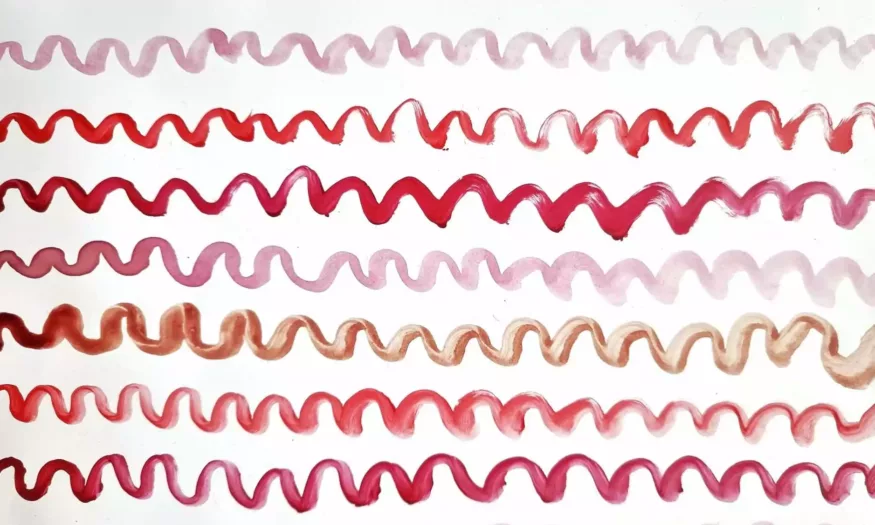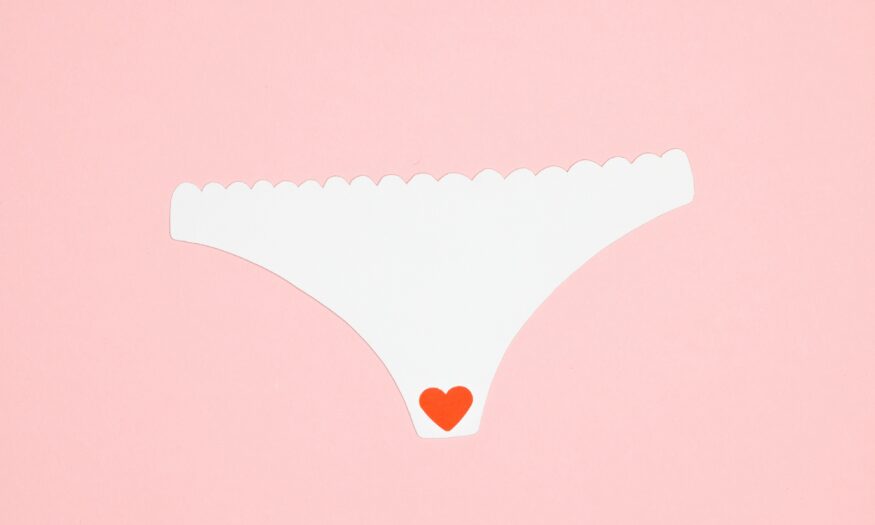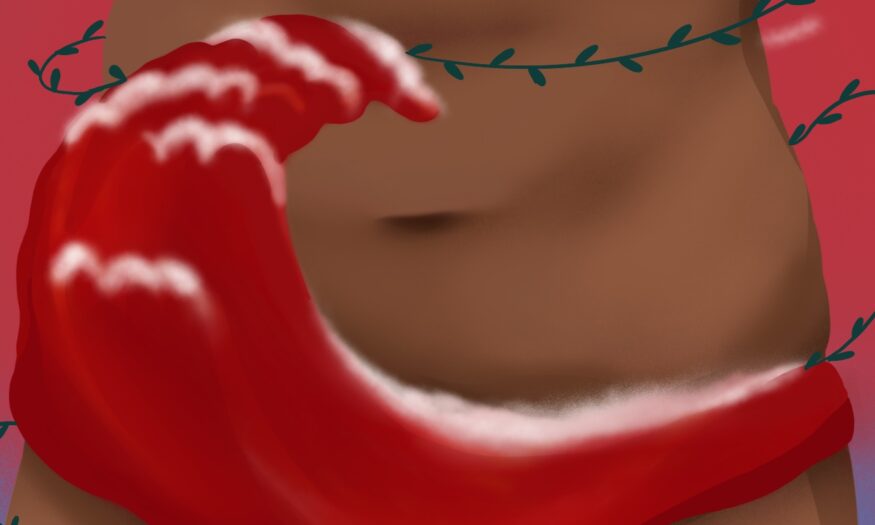Your Cycle, Your Feelings
 Illustration by Cecilia Maafs
Illustration by Cecilia Maafs
-
Topics Include:
Menstruation (Periods)
Premenstrual Syndrome (PMS)
The following text uses the world “pussy*” as defined by Pussypedia.
by Olivia Benson
This article looks at how the menstrual cycle makes us feel. For more about what is happening in your body during each phase, check out our article “The Menstrual Cycle.”
Most of us are well aware of the mood swings that can occur before or during your period. The stereotype of the erratic, bitchy, PMSing woman is well played-out in society, and shines a bad light on the hormones responsible for the menstrual cycle. But our hormones are constantly changing throughout the month, and they do a lot more than just put us in a bad mood.
Understanding each phase of the menstrual cycle, and how your hormone levels change throughout can go a long way in helping you understand how you feel throughout the month. Listening to your body during each phase of the menstrual cycle will help you understand how you personally react emotionally to the hormonal changes, which may give you the advantage of awareness when they’re happening.
Hormones
Estrogen is the primary female sex hormone, and is the one that tells your body when it is time to release an egg. Research has shown that estrogen plays a big role in mood and behaviors by working in partnership with serotonin, dopamine, and other mood-changing brain chemicals called neurotransmitters.1 A specific type of estrogen, estradiol, makes you horny.2 It also might makes you more resilient to social dynamics in your life that stress you out.3
Progesterone, sometimes known as the pregnancy hormone, kicks into action right when your body is at its most fertile to help the egg implant in your uterus and maintain any potential pregnancies by keeping the uterine lining thick.4 One study suggests that high levels of progesterone in your body can make you more responsive to your own internal stressors like your own emotions while making it slightly more difficult to gauge the emotions of others.5
Testosterone is the primary male sex hormone, but is present in people of all sexes and in menstruation, it helps ovaries get ready to send out an egg.6 There is a common idea, even among physicians, that testosterone makes people with pussies* horny, and it is often prescribed off-label for low horniness, especially in postmenopausal women.2 But this idea assumes testosterone operates the same in bodies assigned female at birth as it does in bodies assigned male at birth. There’s evidence that taking testosterone can help people with pussies* who don’t tend to be horny easily.6 But researchers still don’t know just how much testosterone influences horniness in people with pussies* and it seems like a lot less than many physicians think; there is strong evidence that, actually, estrogen plays a bigger role in making us horny and in regulating other sexual functions.2 Testosterone has not been shown to have other effects on mood in people with pussies*.6
Phases
Phase 1 – Menstruation: On day one of the menstrual cycle, the first day of bleeding, all of your hormone levels are low.1 It is common to feel tired, irritable, and moody (yes, not just before your period but during too!).7 This is normal. Give yourself permission to take it easy.
Phase 2 – Pre-Ovulation (follicular): After your period finishes, estrogen and testosterone levels both begin to pick up as your body gets ready to release another egg. Estradiol levels increase by more than 800% over 3–4 days and testosterone increases by roughly 150% over 6–8 days.2 Estradiol and testosterone levels peak just before you ovulate,2 which one study suggests helps you feel more relaxed in stressful situations.3 Higher estrogen gives you a mood boost in general.1 You may feel more attuned to other people. Many studies have found that during the follicular phase, (cis) women are more able to recognize fear, anger, and sadness from others’ facial expressions.5 This is probably also when you feel the horniest.4 The combination of these factors may make you more interested in social interaction during this time.5 While this may all feel great, maybe don’t over commit while you’re feeling super productive only to set yourself up for overwhelm when you’re feeling less like Superwoman.
Phase 3 – Ovulation (also part of follicular): Actual ovulation is short, just the time it takes your body to release an egg. Your body is at its most fertile and super full of estrogen so hormone-related mood is similar to the pre-ovulation phase.1
Phase 4 – Pre-Menstrual (or luteal) AKA PMS Time: This is the last phase of your cycle, when body has realized the pregnancy thing is just not going to happen this month. Your estrogen levels fall dramatically and suddenly, and progesterone begins to rise. Before your period, progesterone rises and then falls.1
You might start to feel irritable and generally bummed out.7 One study suggests progesterone makes you more susceptible to anything you may find distressing, particularly your own feelings.5 You may even experience more moments where you remember something awful and then immediately start feeling awful.3 You may feel more stressed by the same social situations that didn’t bother you a week ago.3 You may be affected more quickly by someone else’s anger or sadness.5 You are not going crazy. 💪 Hang in there.
But also, maybe PMS isn’t entirely bad. Maybe it’s a time to reflect and take stock of how you’re feeling. While you may be more able to distinguish the emotions of others during the follicular weeks, you’re more attuned to your own emotions during the luteal phase.5
In some rare cases people experience severe forms of PMS, which is called Premenstrual Dysmorphic Disorder (PMDD).8
Sources
- Wharton W, Gleason C E, Olson S R M S, Carlsson C M, Asthana S. “Neurobiological Underpinnings of the Estrogen – Mood Relationship.” Curr Psychiatry Rev. (2012): 247–256. <https://www.ncbi.nlm.nih.gov/pmc/articles/PMC3753111/>.
- Cappelletti, Maurand and Kim Wallen. “Increasing Women’s sexual desire: The comparative effectiveness of estrogens and androgens.” Hormones and Behavior. 78. (2016): 178–193. <https://www.ncbi.nlm.nih.gov/pmc/articles/PMC4720522/>.
- Albert, Kimberly, Jens Pruessner, and Paul Newhouse. “Estradiol Levels Modulate Brain Activity and Negative Responses to Psychosocial Stress across the Menstrual Cycle.” Psychoneuroendocrinology. 59. (2015): 14–24. <https://www.ncbi.nlm.nih.gov/pmc/articles/PMC4492530/>.
- Bobel C, Corinna H, Gerber H, Greenfield M, Hitchcock C, et al. “Stages in the Menstrual Cycle.” Our Bodies Ourselves. (2014): </book-excerpts/health-article/stages-in-the-menstrual-cycle/>.
- Derntl, Brigit, Ramona L Hack, Ilse Kyrspin-Exner, and Ute Habel. “Association of Menstrual Cycle Phase with the Core Components of Empathy.” Current Psychiatry Rev. 8(3). (2012): 247–256. <https://www.ncbi.nlm.nih.gov/pmc/articles/PMC3549494/>.
- Udoff, Laurence, C. “Overview of androgen deficiency and therapy in women.” UptoDate. (2018). <https://www.uptodate.com/contents/overview-of-androgen-deficiency-and-therapy-in-women>.
- Ernst, Holly, Watson, Stephanie. “Stages of the Menstrual Cycle.” Healthline. (2017). <https://www.healthline.com/health/womens-health/stages-of-menstrual-cycle>.
- OBOS Anatomy & Menstruation Contributors. “Physical and Emotional Challenges.” Our Bodies Ourselves. (2014): </book-excerpts/health-article/dealing-with-physical-and-emotional-changes>.
This article was previously published in Pussypedia and is reposted with permission.
Related Stories & Conversations:
My Story: Controlling My Period with the Pill






